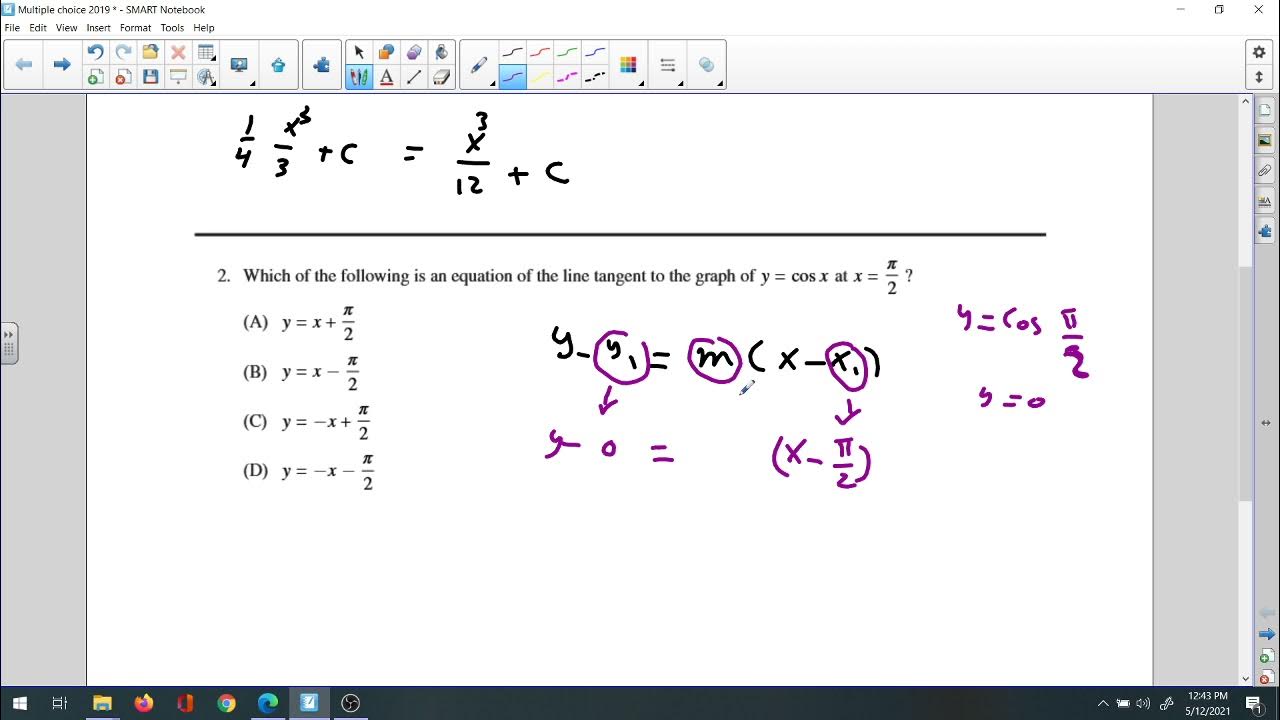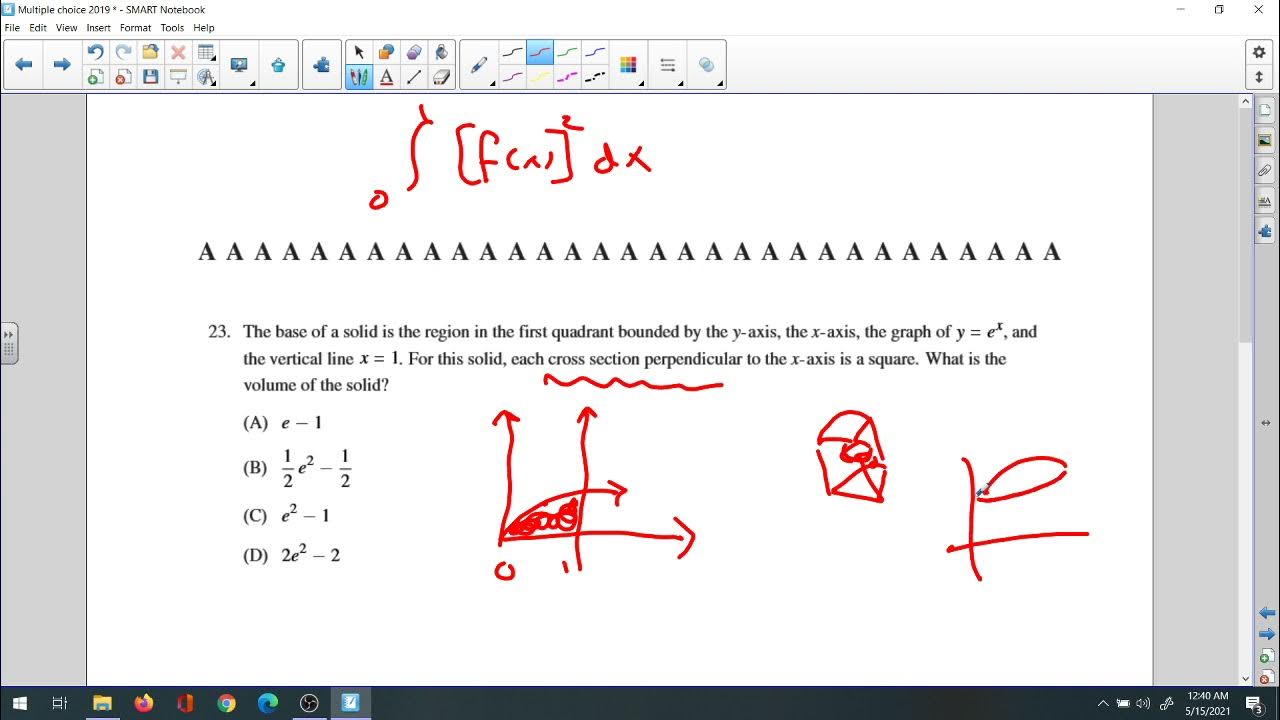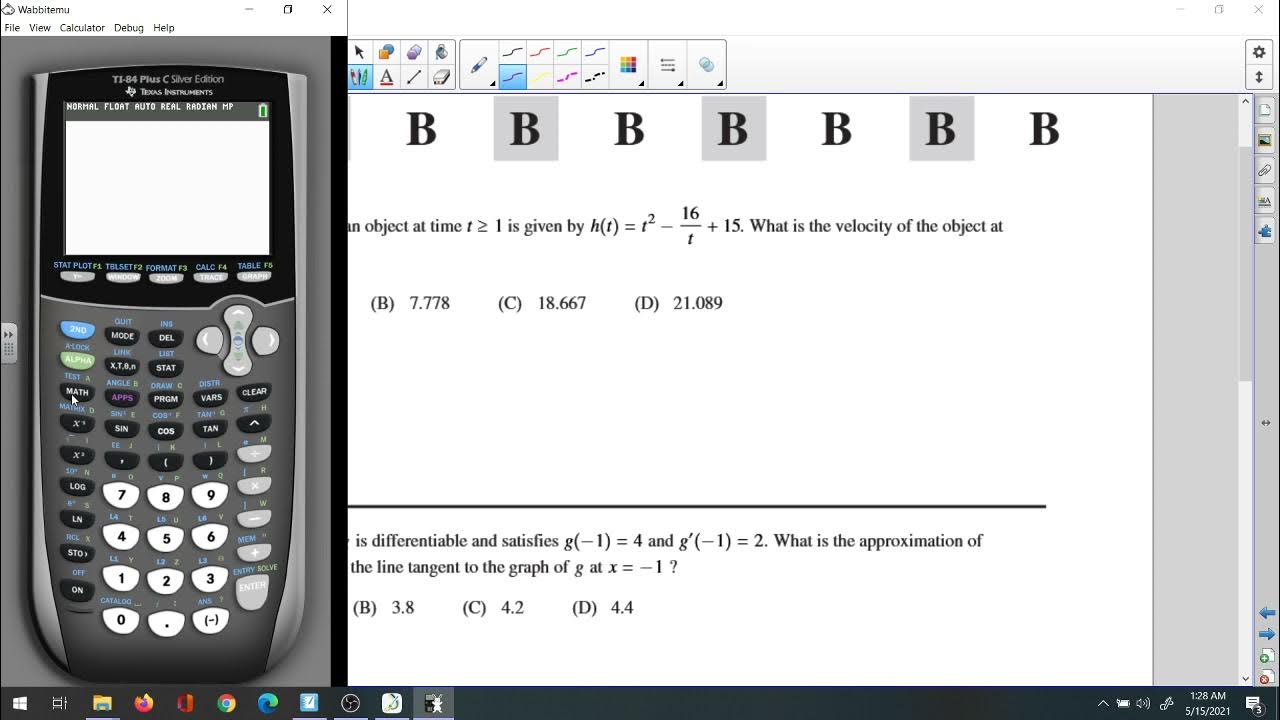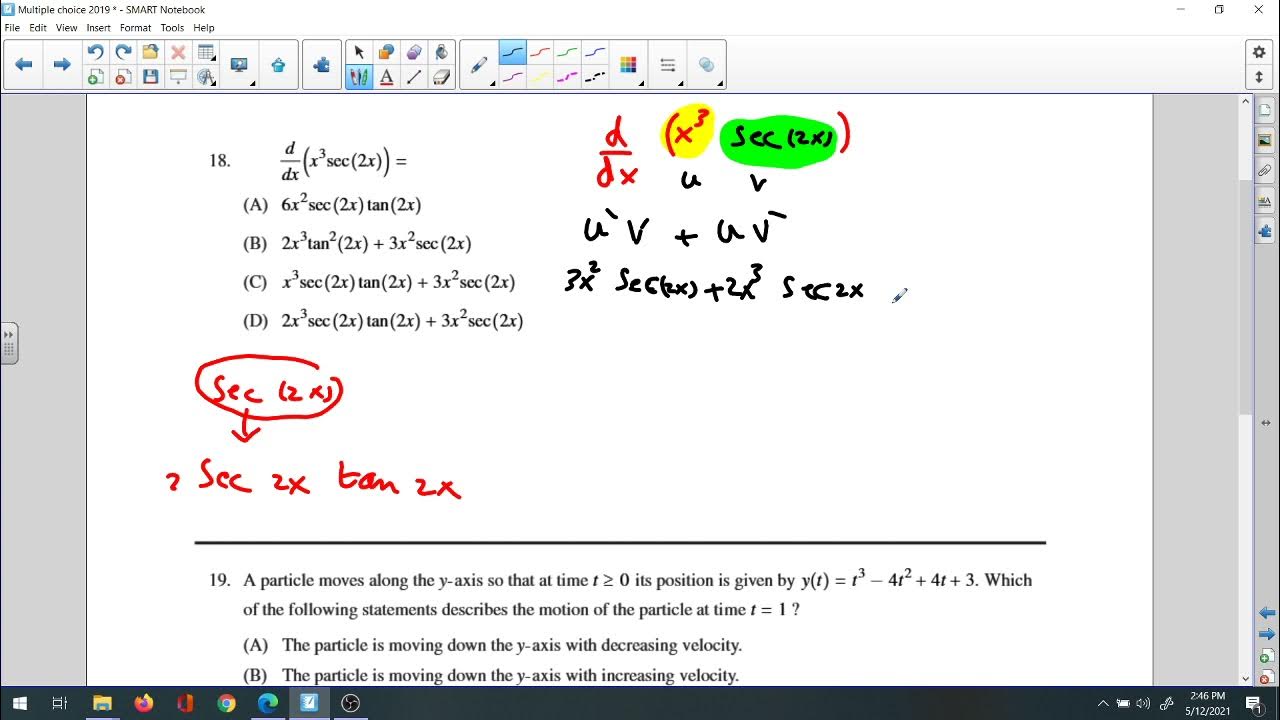2019 Multiple choices 24, 25
TLDRThis video script offers an in-depth review of the 2019 AP Calculus Multiple Choice exam, meticulously dissecting the questions to provide students with a clear understanding of the concepts tested. It covers a range of topics, from limits and derivatives to integrals and series, with a focus on problem-solving strategies and common pitfalls. The analysis is designed to not only help students prepare for the exam but also to deepen their grasp of calculus, making it an invaluable resource for those looking to excel in their studies.
Takeaways
- 📘 The 2019 AP Calculus exam includes both AB and BC sections, with distinct sets of multiple-choice questions.
- 📝 Understanding the fundamental theorem of calculus is crucial for solving many problems.
- 📐 Graph interpretation is a key skill, especially for questions involving derivatives and integrals.
- 📈 Pay close attention to the behavior of functions, including limits and continuity.
- 🔍 Review common differentiation and integration techniques, including the chain rule, product rule, and integration by parts.
- ⚖️ Be prepared to solve real-world application problems, such as those involving rates of change and areas under curves.
- 🔢 Mastery of sequences and series, especially for the BC exam, is essential.
- ⏰ Time management during the exam is critical; practice pacing yourself through each section.
- 💡 Utilize multiple choice strategies such as process of elimination and plugging in answer choices.
- 📚 Consistent practice with past exam questions can greatly improve familiarity with the exam format and question types.
Q & A
What is the main focus of the 2019 AP Calculus Multiple Choice problems review?
-The main focus is to analyze and understand the types of questions, strategies for solving them, and the concepts tested in the 2019 AP Calculus Multiple Choice section.
What are some common types of questions found in the AP Calculus Multiple Choice section?
-Common types include limit problems, derivative problems, integral problems, and application-based questions involving rates of change, accumulation, and optimization.
How can students prepare for limit problems in the AP Calculus exam?
-Students should practice using algebraic manipulation, L'Hôpital's Rule, and understanding the behavior of functions as they approach certain values.
What is the significance of understanding the concept of limits in calculus?
-Understanding limits is crucial as they form the foundation for understanding continuity, differentiability, and the behavior of functions at critical points.
How can students approach derivative problems in the AP Calculus exam?
-Students should be familiar with the power rule, product rule, quotient rule, and chain rule, as well as techniques for finding derivatives of trigonometric and exponential functions.
What is the product rule in calculus and why is it important?
-The product rule states that the derivative of a product of two functions is the derivative of the first function times the second function plus the first function times the derivative of the second function. It is important for solving problems involving the rates of change of products of variables.
How can integral problems be approached in the AP Calculus exam?
-Students should be proficient in using substitution, integration by parts, and recognizing standard integrals to solve integral problems efficiently.
Why is substitution a useful technique in integration?
-Substitution simplifies the integral by transforming it into a simpler form that can be more easily evaluated, often by recognizing a pattern or a known integral.
What are some strategies for solving application-based questions in the AP Calculus exam?
-Students should be able to set up equations based on the problem's context, translate word problems into mathematical expressions, and apply appropriate calculus concepts such as optimization or accumulation.
How can students improve their problem-solving skills in calculus?
-Regular practice, understanding the underlying concepts, and learning from mistakes are key strategies. Additionally, reviewing solved examples and discussing problems with peers or teachers can be beneficial.
What is the role of optimization problems in the AP Calculus exam?
-Optimization problems test students' ability to apply calculus to real-world scenarios, such as finding maximum or minimum values of functions, which is crucial in fields like economics, physics, and engineering.
Outlines
📚 AP Calculus Review
This paragraph introduces the task of reviewing AP Calculus Multiple Choice problems from the year 2019. The focus is on revisiting the problems to understand the concepts and strategies involved in solving them, which is crucial for students preparing for the AP exam.
Mindmap
Keywords
💡Derivative
💡Integral
💡Chain Rule
💡Product Rule
💡Quotient Rule
💡Fundamental Theorem of Calculus
💡Limits
💡Continuity
💡Implicit Differentiation
💡Optimization
Highlights
Introduction to the 2019 AP Calculus exam format and structure.
Explanation of the multiple-choice question types in the exam.
Strategies for tackling rate of change problems.
Analysis of the integration by parts technique.
Discussion on the application of L'Hôpital's Rule in limit problems.
Key concepts in the Fundamental Theorem of Calculus.
Approaches to solving optimization problems in calculus.
The importance of understanding the concept of derivatives.
Review of common mistakes made in the application of the chain rule.
Tips for solving problems involving parametric equations.
Insights into the use of trigonometric identities in calculus problems.
Highlighting the role of sequences and series in calculus.
Exploration of the concept of continuity and its implications.
Discussion on the application of the Mean Value Theorem.
Techniques for solving volume and surface area problems.
The significance of the Riemann Sum in understanding integrals.
Review of the AP Calculus scoring guidelines and how to maximize points.
Final thoughts and advice for students preparing for the AP Calculus exam.
Transcripts
5.0 / 5 (0 votes)
Thanks for rating:





